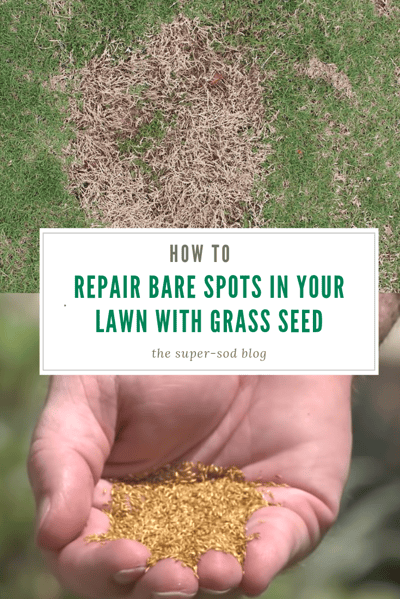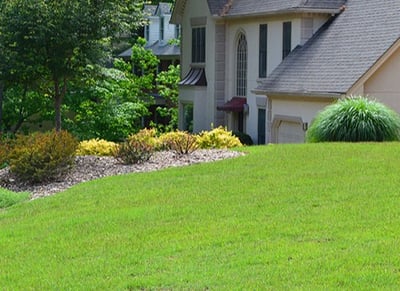
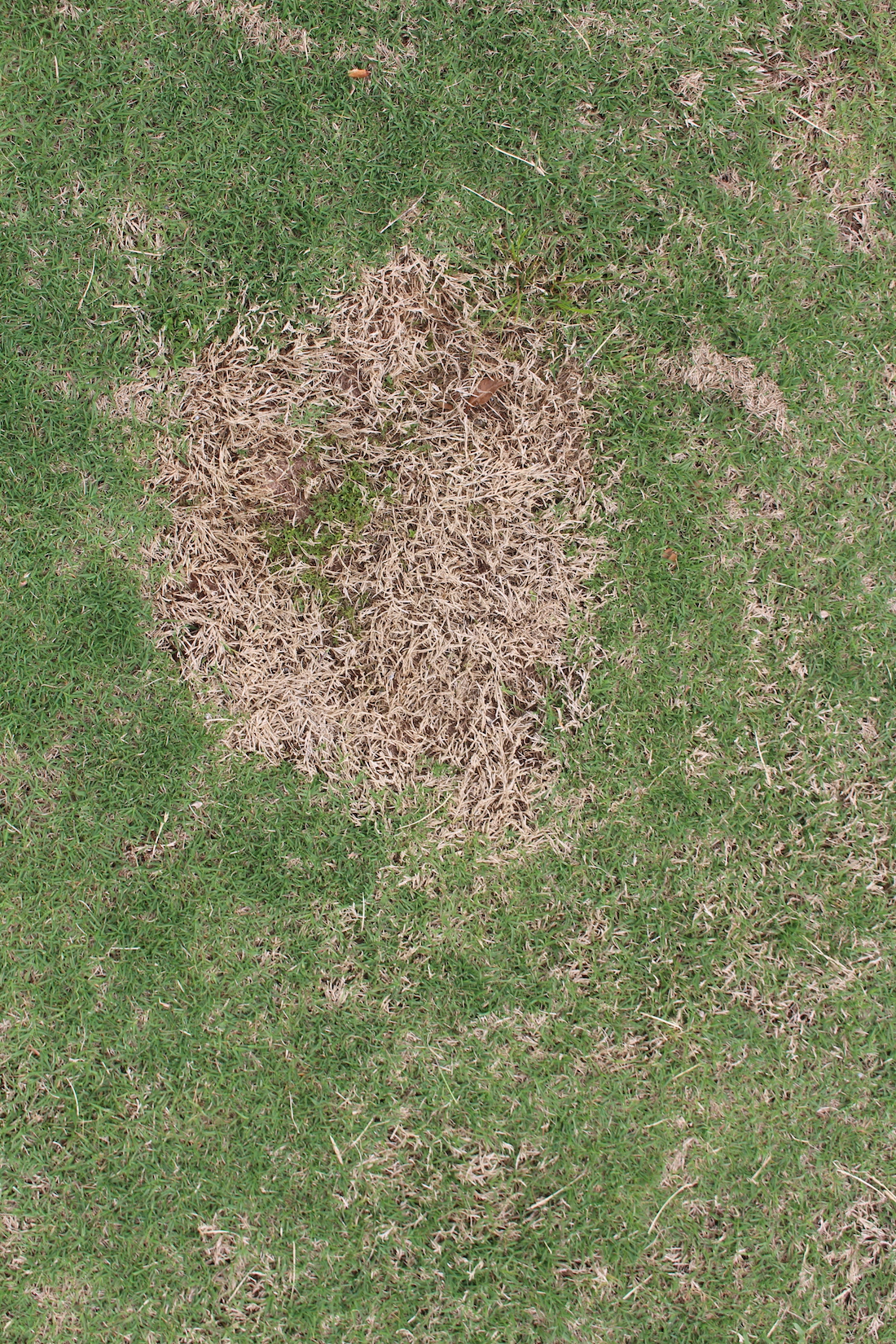
Patching Your Lawn with Warm Season Grass Seed [Video]

Do you know that spot in your lawn that makes you cringe?
What happened there?
The kids kicked the ball from this spot enough to make it as dusty as a baseball diamond. Maybe you finally dug up that bush previous owners placed in the most ridiculous part of the yard. Perhaps your lawn paid the price for that super-fast internet that you have now, as the internet installers hacked their way through your lawn installing that line?
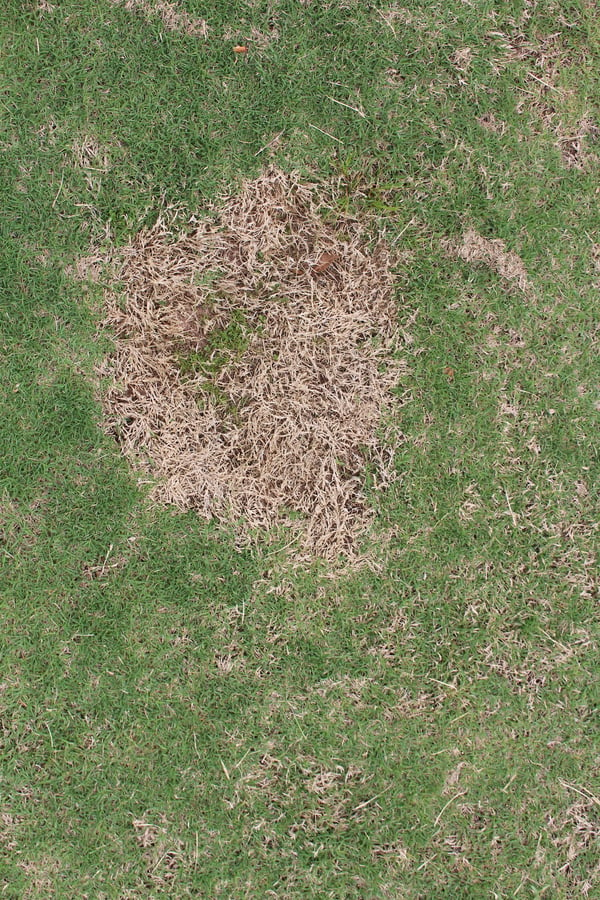
No matter what the cause, this bare spot can be filled in easily with a little bit of preparation.
Determine Your Course of Action
You’ll want to ensure that the grass used to patch matches what you already have, or else that bald spot will bother you in a whole different way.
If your grass is only available in sod form, use a roll or two of sod to patch it up. We have those available in Super-Sod stores for pickup.
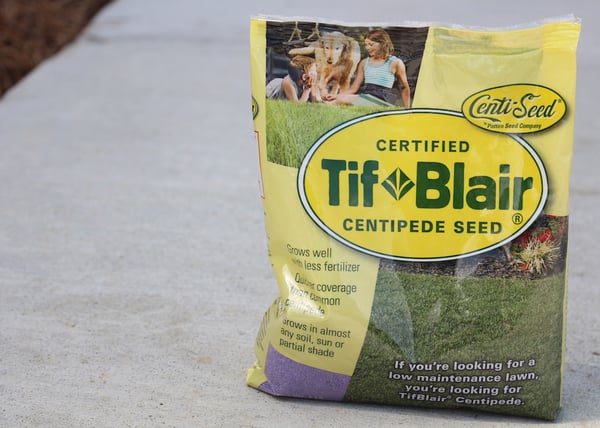 The other alternative is patching up that portion of your grass with TifBlair Centipede or Zenith Zoysia seed.
The other alternative is patching up that portion of your grass with TifBlair Centipede or Zenith Zoysia seed.
Note that this isn’t the same as overseeding, like you would with a cool season grass like Tall Fescue. We cover the differences between the warm and cool season grass seed in this blog.
Follow These Steps for Patching Damaged Areas of Your Lawn
Ley Pickens demonstrates the steps of filling in bare patches in your lawn with grass seed the video above. You can also watch it on YouTube here. This video specifies Zenith Zoysia seed, but the same planting method works for TifBlair Centipede.
Here are the steps written to ensure your success in getting that seed to grow!
1. Use a hard-toothed rake to loosen the soil through bare areas.
- This will make the existing soil a healthy bed for the seed.
- Freshly raked soil will also create good seed-to-soil contact for ideal germination.
2. Remove rhizomes & stolons from the bare area.
- Clear as much existing vegetation as possible – whether dead or alive.
- Any vegetation left behind will compete with your new grass seeds, and the seeds need all the help they can get during the germination process.
3. Add layer of Soil3, an OMRI listed organic humus compost.
- An organic compost creates a nutrient-enriched seed bed.
- Spread Soil3 over raked bare areas to create a 1-2” layer in which the seed will germinate.
- Smooth the 1-2” Soil3 with your hand to ensure it’s even.
4. Plant Zenith Zoysia or TifBlair Centipede grass seed
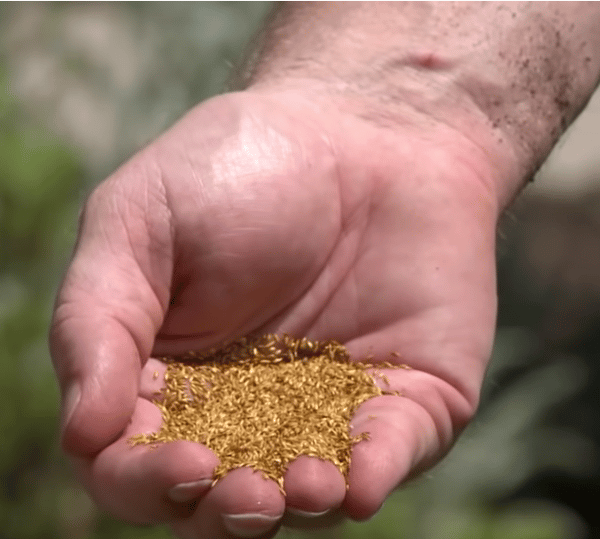 Zenith Zoysia seed is small, so a little seed goes a long way.
Zenith Zoysia seed is small, so a little seed goes a long way.
- Both Zenith and TifBlair seeds are small. A little seed goes a long way.
- The seeding rate is 1 lb. to 1,000 square feet for Zenith Zoysia.
- 1 lb. of TifBlair Centipede seed covers up to 4,000 square feet.
- You can purchase Zenith or TifBlair seed in various package sizes online and have the seed shipped straight from our seed plant in Georgia.
- For small areas like these, seed by hand evenly on Soil3 bed instead of using a spreader.
- If you’re seeding an entire lawn, follow these instructions.
5. Lightly dust another layer of Soil3 over seed.
- The small seed needs to be just under Soil3. We recommend ¼-1/8” of Soil3 on top of the seed.
- Soil3 will help keep the grass seed moist, while using something like wheat straw to cover your seed could introduce weed seeds to the fresh seed bed.
- The compost will also prevent natural disturbances like wind and birds.
6. Water in the warm season grass seed.
- Watering is absolutely crucial to results. It’s the most important part of the seeding process.
- The amount of water depends on soil type, land layout, and temperature. The rule of thumb is that your soil should stay consistently moist until the seed germinates.
- Depending on your soil type, that means you’ll need to water 2-4 times a day until the seed germinates, typically within the first 14 days.
Waiting For Results
If you seeded your lawn the first time, you’ll know this. If this is your first experience with warm season grass seed, it’s crucial that you remember patience is key!
It could take up to 21 days to see germination, and when the seed first sprouts it will be very small. Patten Seed Company expert Chris Roquemore wrote a blog and filmed time lapse videos to show you what you should expect out of your grass seed over the first 51 days after planting.
Questions about this method? Ask away in the comments below.
